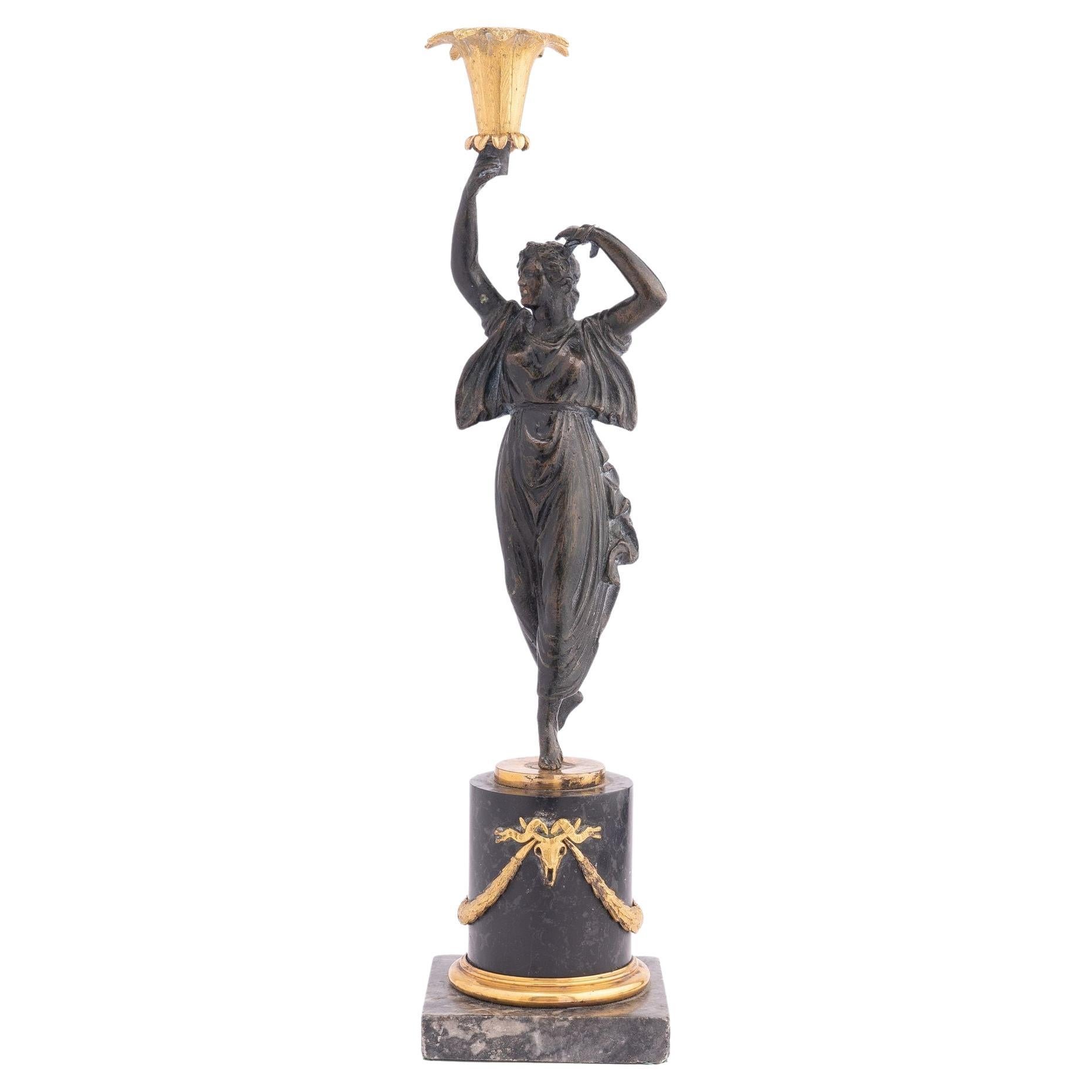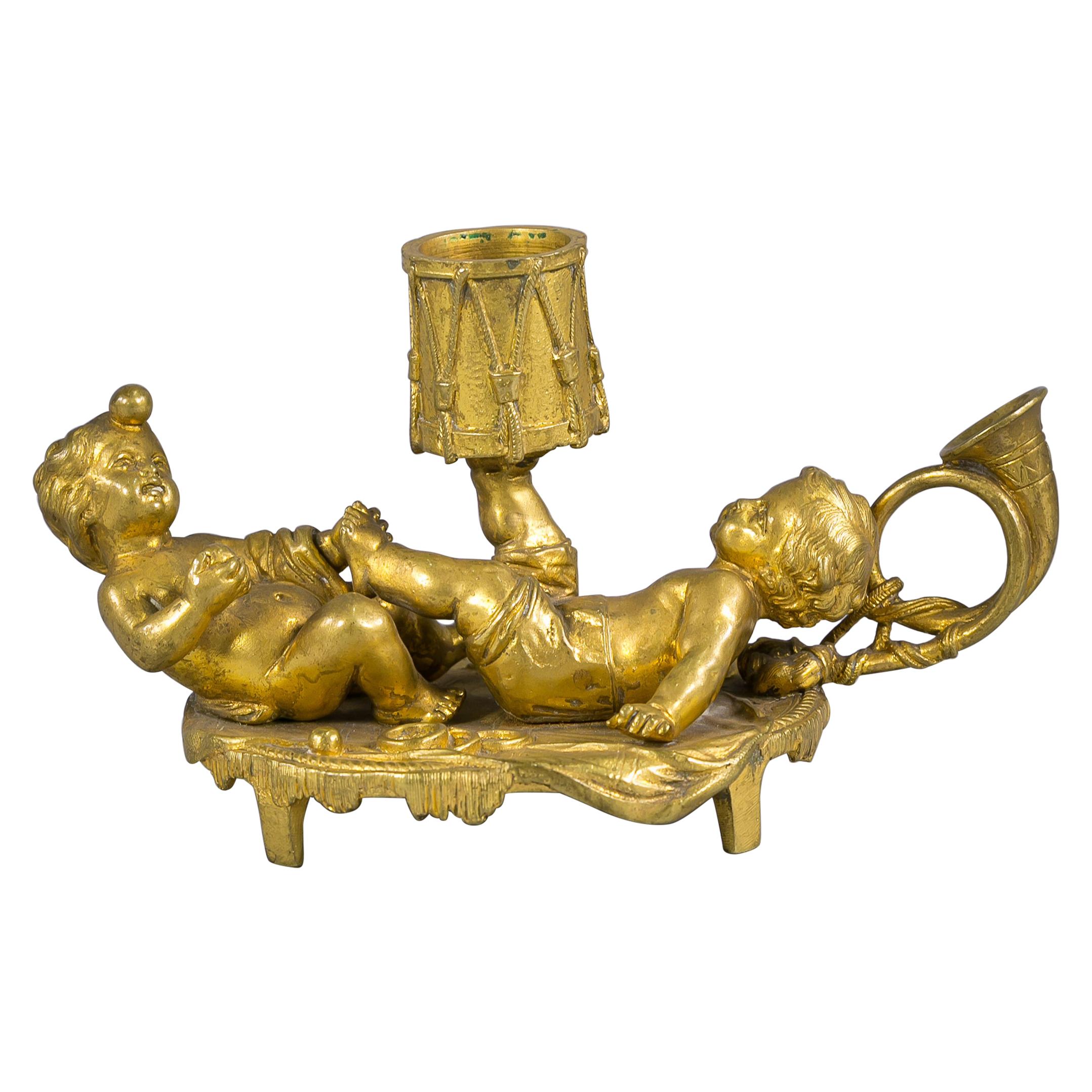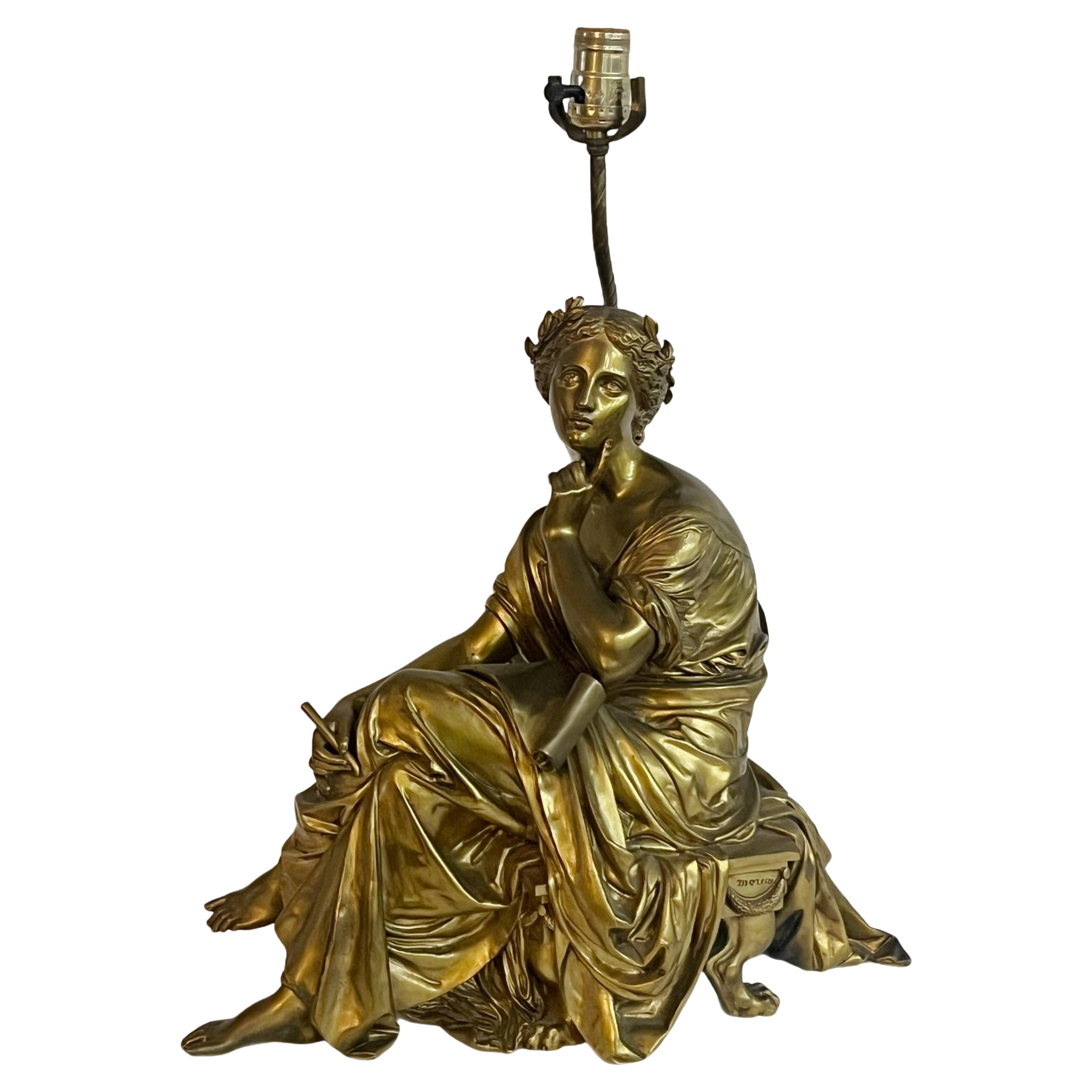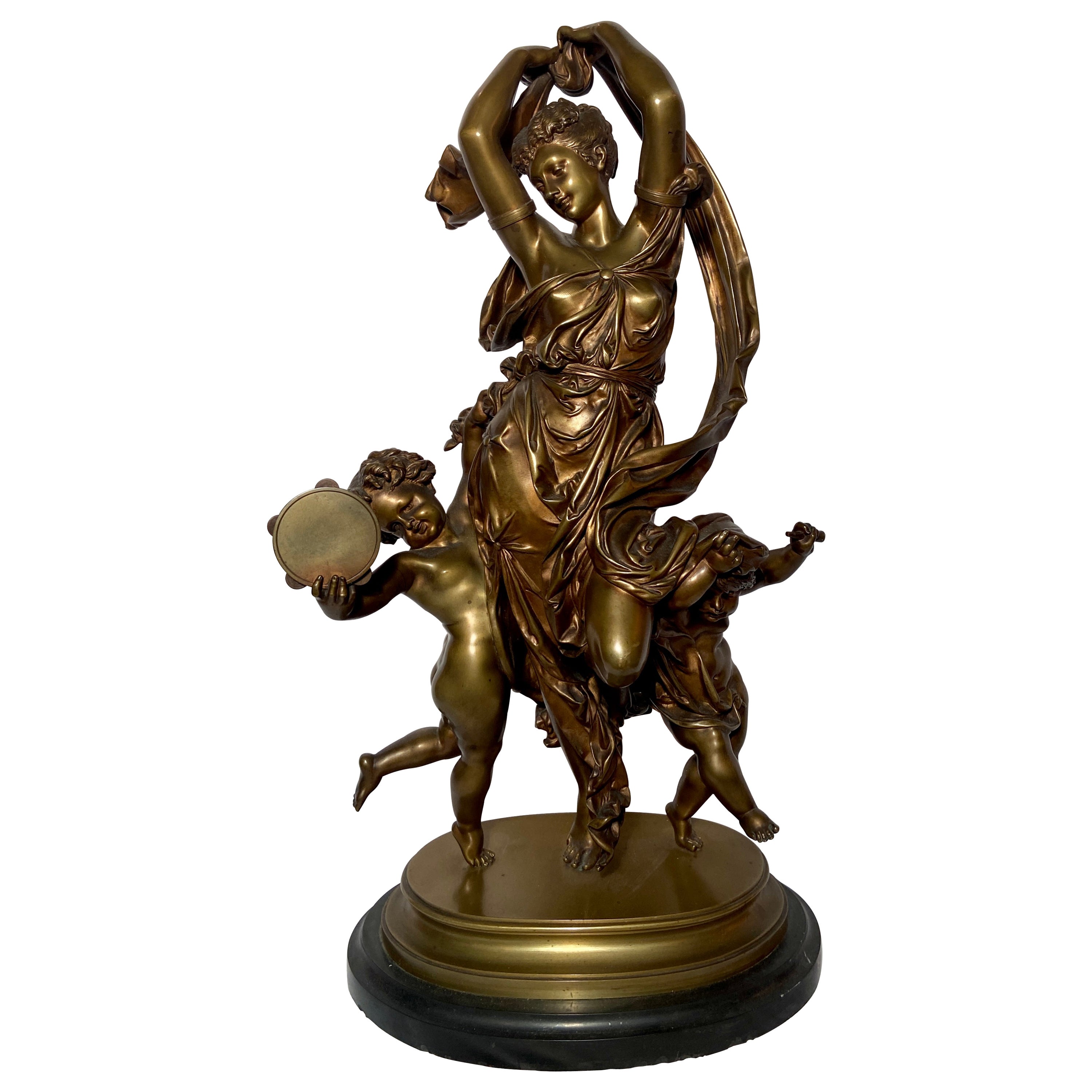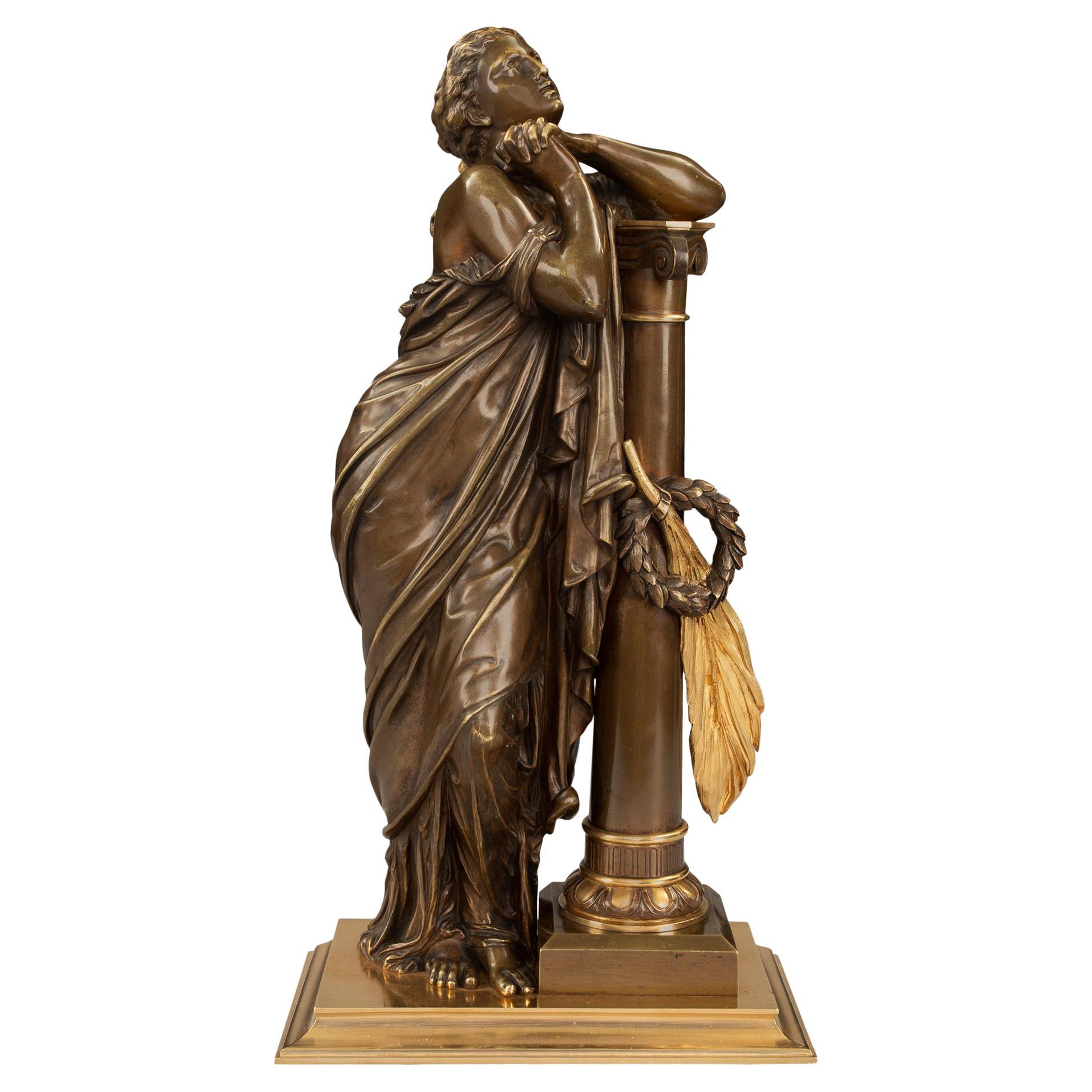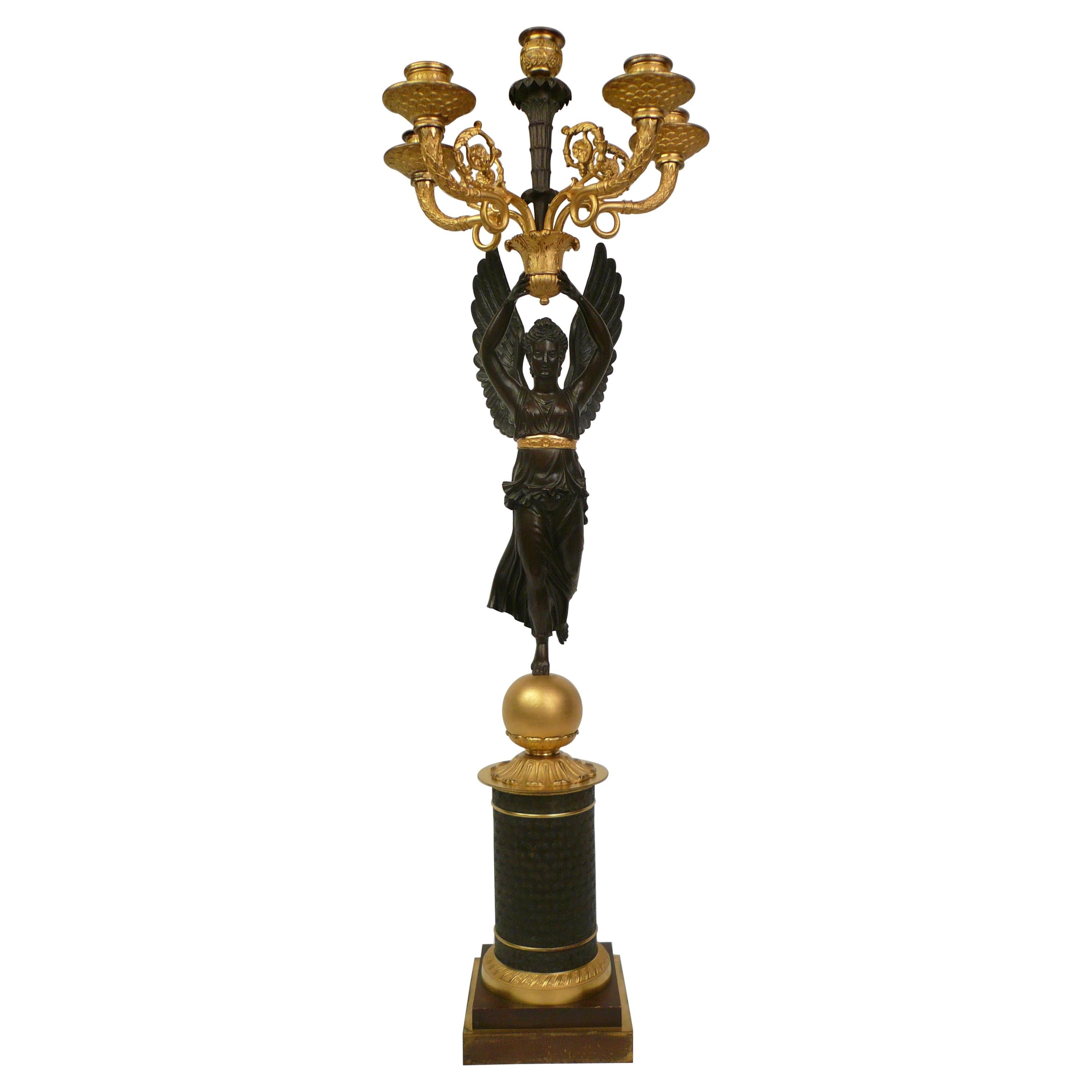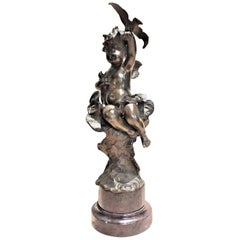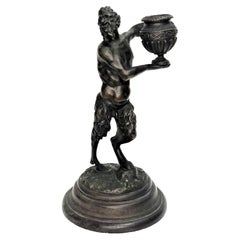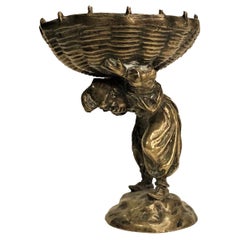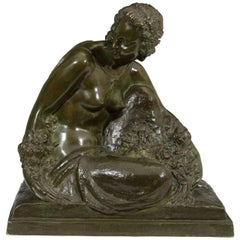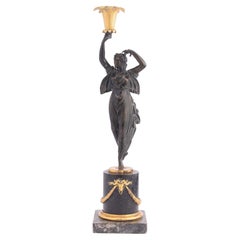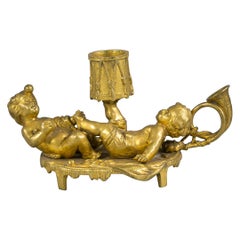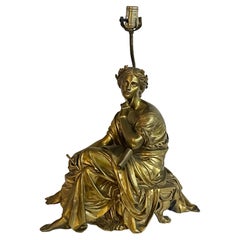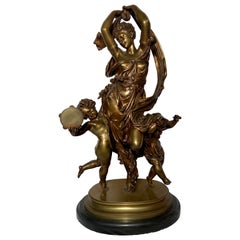Items Similar to La Cruche Casee, Antique French Bronze Sculptural Desk Candleholder, circa 1875
Want more images or videos?
Request additional images or videos from the seller
1 of 10
La Cruche Casee, Antique French Bronze Sculptural Desk Candleholder, circa 1875
$850
£645.31
€738.09
CA$1,187.57
A$1,320.84
CHF 689.70
MX$16,073.23
NOK 8,808.55
SEK 8,260.86
DKK 5,508.66
Shipping
Retrieving quote...The 1stDibs Promise:
Authenticity Guarantee,
Money-Back Guarantee,
24-Hour Cancellation
About the Item
The inscription engraved on the gilded medallion in the center of the plinth serves as the name of this remarkable sculpture, La Cruche Casee (The Broken Jug). Made of multicolored patinated and ormolu bronze in the second half of the 19th century France, this absolutely fabulous stationary figural candle holder was probably intended to embellish a gentleman's desk, judging by the plot of the depicted scene - a beautiful young girl came to the fountain to get water, but in a day-dreaming state did not even notice, as one of her pitchers fell to the ground and got smashed.
- Dimensions:Height: 8.13 in (20.66 cm)Width: 6 in (15.24 cm)Depth: 4 in (10.16 cm)
- Style:Romantic (Of the Period)
- Materials and Techniques:
- Place of Origin:
- Period:1870-1879
- Date of Manufacture:circa 1875
- Condition:Wear consistent with age and use. We make our best effort to provide a fair and descriptive condition report. Please examine the photos attentively, as they are an integral part of the item description.
- Seller Location:New York, NY
- Reference Number:1stDibs: LU2819310188931
About the Seller
5.0
Vetted Professional Seller
Every seller passes strict standards for authenticity and reliability
Established in 1993
1stDibs seller since 2017
83 sales on 1stDibs
Typical response time: 7 hours
- ShippingRetrieving quote...Shipping from: New York, NY
- Return Policy
Authenticity Guarantee
In the unlikely event there’s an issue with an item’s authenticity, contact us within 1 year for a full refund. DetailsMoney-Back Guarantee
If your item is not as described, is damaged in transit, or does not arrive, contact us within 7 days for a full refund. Details24-Hour Cancellation
You have a 24-hour grace period in which to reconsider your purchase, with no questions asked.Vetted Professional Sellers
Our world-class sellers must adhere to strict standards for service and quality, maintaining the integrity of our listings.Price-Match Guarantee
If you find that a seller listed the same item for a lower price elsewhere, we’ll match it.Trusted Global Delivery
Our best-in-class carrier network provides specialized shipping options worldwide, including custom delivery.More From This Seller
View AllFrench Belle Époque, Patinated Bronze Desktop Sculptural Paperweight, 19 Century
Located in New York, NY
Signed illegibly original red marble base.
Dimensions: H: 8.25” x W: 3.25” x D: 4.25” Base diameter: 2.75”
This beautiful and delicate desktop dark chocolate-brown patinated br...
Category
Antique 1870s French Belle Époque Paperweights
Materials
Marble, Bronze
Antique Continental Patinated Bronze Fawn Candlestick, 19th Century
Located in New York, NY
Probably Italian, 19th Century patinated bronze candlestick in form of a dancing Fawn holding a candle-vessel in his hands, on its original wood base.
Category
Antique 1880s Italian Belle Époque Figurative Sculptures
Materials
Bronze
Art Nouveau Sculptural Gilded Vienna Bronze Candy Bowl, ca. 1900
Located in New York, NY
Probably, Austrian, this very original Art Nouveau orientalist sculptural candy bowl made of gilded Viennese bronze, depicts a young street vendor in bloomers and a fez, holding a hu...
Category
Antique Early 1900s Austrian Art Nouveau Decorative Bowls
Materials
Bronze
Marcel-André Bouraine, Nude, French Art Deco Bronze Sculpture, circa 1920s
By Marcel-André Bouraine
Located in New York, NY
An Art Deco bronze sculpture of a seated semi-nude woman by Marcel-André Bouraine, French, 1886-1948.
Category
Vintage 1920s French Art Deco Figurative Sculptures
Materials
Bronze
$4,550 Sale Price
30% Off
Charles Raphaël Peyre, French Art Deco Silvered Bronze Sculptural Group, c. 1925
By Charles Raphaël Peyre
Located in New York, NY
Art Deco silvered bronze sculptural group with two female putti figures reclining together in an embrace, surrounded by flowers and filigree. Sculpture has a beautiful silver finish, and rests on the original rouge marble base. Signed on the right front “Raphael Peyre”; and foundry mark “B.L. Paris” with “Cire Perdue” (lost wax) in an oval cartouche in the back.
The piece is very heavy (51 pounds), crating recommended for shipment.
Charles Raphaël Peyre...
Category
Vintage 1920s French Art Deco Figurative Sculptures
Materials
Bronze
Austrian Art Deco, Dancer, Patinated Bronze, Onyx and Marble Lamp, circa 1920s
Located in New York, NY
A beautiful and very unusual Austrian Art Deco nightstand lamp with a semi-nude exotic dancer in a luxury headdress. The lamp base is made of combination of black marble and onyx, wi...
Category
Vintage 1920s Austrian Art Deco Table Lamps
Materials
Onyx, Marble, Bronze
$3,360 Sale Price
20% Off
You May Also Like
French Empire Parcel Gilt Bronze Figural Candlestick, 1800-1810
Located in Kenilworth, IL
Patinated and parcel gilt cast bronze figural candlestick on a circular marble base with square plinth. The figure, standing on one foot, holds a leafy form fire gilt candle cup abov...
Category
Antique Early 19th Century French Empire Candlesticks
Materials
Marble, Bronze
Bronze Figural Chamberstick, French, circa 1875
Located in New York, NY
Bronze figural chamberstick, French, circa 1875.
Category
Antique 1870s French Candlesticks
Materials
Bronze
Bronze A. Moreau Table Lamp Sculpture
By August Moreau
Located in Miami, FL
A bronze sculpture by Auguste Moreau mounted as a lamp. Height to socket is 23”
Category
Vintage 1910s French Figurative Sculptures
Materials
Bronze
Antique French "A. Carrier" Patinated & Gold Bronze Neoclassical Statue Ca. 1890
Located in New Orleans, LA
Antique 19th Century French Patinated and Gold Bronze Sculpture, Neoclassical Figures, signed with "A. Carrier" Foundry Mark.
French artist Albert Ernest Carrier-Belleuse 1824-1887.
Category
Antique 19th Century French Figurative Sculptures
Materials
Bronze
French 19th Century Neoclassical Style Patinated Bronze and Ormolu Statue
Located in West Palm Beach, FL
A superb and high quality French 19th century Neo-Classical st. patinated bronze and ormolu statue. The statue is raised by a rectangular ormolu base with a most elegant and decorati...
Category
Antique 19th Century French Neoclassical Figurative Sculptures
Materials
Bronze, Ormolu
Early 19th Century French Empire Bronze NIKE Figural Candelabra
By Pierre-Philippe Thomire
Located in Pittsburgh, PA
This stately patinated and fire gilt bronze candelabrum is of the finest quality, and retains its original finish.
The figure of Nike (Winged Victory) standing on a gilt globe holds...
Category
Antique Early 19th Century French Empire Candelabras
Materials
Bronze
More Ways To Browse
Sculptural Desk
French Water Jug
French Water Pitcher
Gentleman Desk
Scene Pitcher
Bronze Jug
Antique Stationary Desk
French Cruche
Antique Bronze Pitcher
Judge Desk
Scented Candles
Votive Holder
Incense Holder
Hurricane Candles
Crystal Votive
Tea Light Candle Holders
Crystal Votive Candle Holders
India Brass Candle Holder
